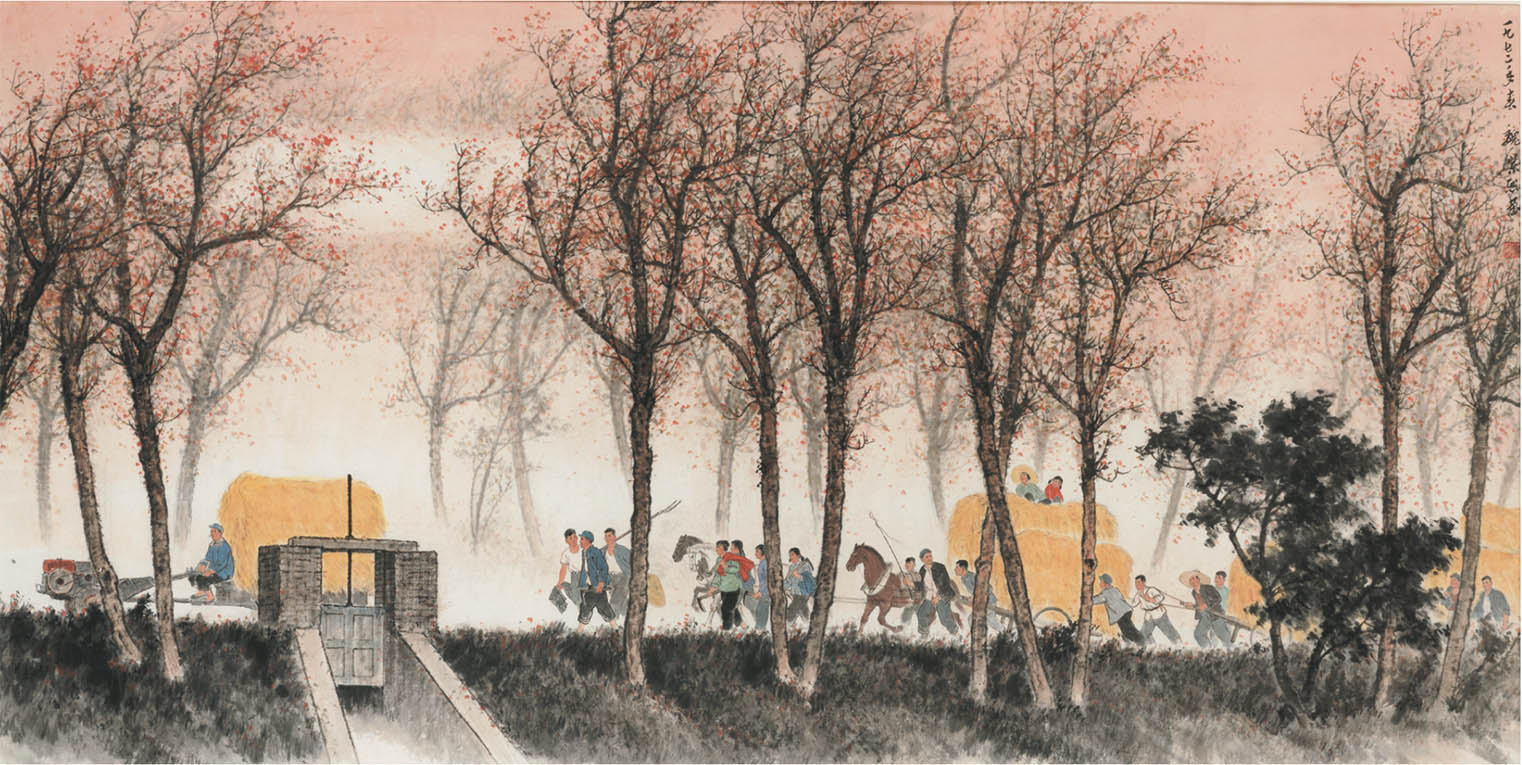
Wei Zixi
Return from Harvest
1972
Ink and Color on Paper
The period from the 1950s to the 1970s was the pinnacle of Wei Zixi’s figure painting creation. During this period, he drew a number of figure paintings, Spring Festival paintings and comic strips that glorified the new China. In particular, he integrated figure painting with landscape painting, and created new Chinese paintings with brush and ink – the traditional language, to record the new era and new outlook, which became the unique theme of his works.
Return from Harvest depicts the scene of busy grain transportation on a river bank. There is a sluice on the left side of the picture, indicating that it is in such a special environment of the river bank. The autumn red leaf forest beside the river bank creates an overall autumn atmosphere. On this straight river bank, there are tractors in front and carriages behind, all showing a bumper harvest. No matter driving a tractor or helping to pull a flatbed cart, the educated youth are full of joy on their way back from harvest work. They grow up in the “vast world” of the countryside, and make great achievements. Undoubtedly, this is a landscape in a special era. The painter skillfully dealt with the relationship between the educated youth and the farmers, and connected several groups of characters with straight lines. The description of pastoral life makes viewers immersed in the scene, which shows the painter’s observation of life and intention of careful arrangement.
The whole work presents a flourishing scene, especially the action of driving tractors in the picture, which demonstrates characteristics and dynamics of the times, and reflects the optimism of the working people to create a new life and the farmers’ expectation and joy for the harvest. The artist broke through the limitations of traditional figure painting techniques, and showed the historical features of this era in his works that also represent the great achievements of figure painting creation in this era.
(Edited by Li Hanning & Yang Zhige, 2021)

